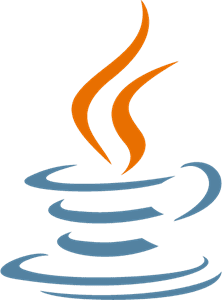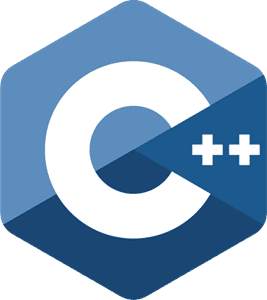Top 10 Programming Languages to Learn in 2021
The programming and developer communities are emerging at a faster rate than ever before. Several new programming languages are being rolled out suitable for different classes of developers (beginners, intermediate and expert) as well as for different use cases (web applications, mobile applications, game development, distributed system, etc.). Every beginner feels puzzled by the question "What programming language should I learn?"
Programming levels
There are several programming languages that have their own specific purpose and contain a unique set of keywords and syntax used to create instructions. A programming language differs in its level of abstraction and is classified into two classes:
- Low level language
- High level language
Low-level language
Low-level languages provide hardware abstraction and are represented in binary, i.e. 0 or 1 which are device instructions. Low-level languages are also categorized as machine level language and assembly level language.
High-level language
The high-level language allows us to write programs independent of the type of computer. High-level languages have been called high-level because they are close to human languages and can be easily understood, except that they require attention to the logic of the problem. A language needs a translator to translate a high-level language into a low-level language. Moreover, high-level languages provide the following advantage:
- The high-level language is easy to learn and memorize.
- High-level languages are portable, that is, they are machine-independent.
Types of programming languages
Let's now take an overview of the different types of programming languages:
1. Procedural programming languages
This programming model, derived from structured programming, defines a series of well-organized procedures and steps for creating a program.
It provides a set of commands by separating the program into variables, functions, statements, and conditional operators. Various programming editors or IDEs help users to develop programming code using one or more programming languages. Some of them are Adobe Dreamweaver, Eclipse or Microsoft visual studio, BASIC, C, Java, PASCAL, FORTRAN are examples of procedural programming language.
2. Functional programming languages
A functional programming language is an declarative programming paradigm wherein programs are created by applying and composing functions. Language emphasizes expressions and pronouncements more than data implementation. The basis of functional programming is the lambda computation which uses conditional and recursive expressions to perform mathematical operations. It does not support repetition like loop clauses and conditional statements like if-else. Some of the most notable functional programming languages are Haskell, SML, Scala, F #, ML, Scheme, and more.
3. Object-Oriented Programming Language
This programming model is based on "objects", that is, it contains data in the form of fields and code in the form of procedures. OOPs, offering many features such as abstraction, encapsulation, polymorphism, inheritance, classes, and objects. Encapsulation is the main principle as it guarantees safe code. It also emphasizes the reuse of code with the concept of inheritance and polymorphism that allows existing applications to be published without changing too much of the code. Most of the multi-paradigm languages are OOPs languages like Java, C ++, C #, Python, Javascript, and more.
4. Scripting languages
All scripting languages are programming languages that do not require an assembly step and are rather interpreted. Instructions are written for the runtime environment. The languages are used mainly in web applications, system administration, game and multimedia applications. It is used to create extensions and extensions for existing applications. Some of the popular scripting languages are:
- Server-side scripting languages: Javascript, PHP, and PERL.
- Client-side programming languages: Javascript, AJAX, and Jquery
- System management: Shell, Perl, Paython
- Linux interface: BASH
- Web Development: Ruby
5. Logical programming
The programming paradigm relies heavily on formal logic. Language does not tell a machine how to do something but it does use constraints on what it should think. PROLOG, ASAP (Answer Set Programming) and Datalog are major logic programming languages, and rules are written in the form of classes.
Let's take a look at the best programming languages in the job market that should be learned in 2021:
The best programming languages in the labor market 2021
1. Python
Python undoubtedly tops the list. It is widely accepted as the best programming language for beginners. Python is a fast, easy-to-use, and easy-to-publish programming language that is widely used for developing scalable web applications. YouTube, Instagram, Pinterest, and SurveyMonkey are all built into Python. Python provides excellent library support and has a large developer community. The programming language provides a great starting point for beginners. Speaking of those looking for a better job, you should definitely learn Python ASAP! A lot of startups use Python as their primary backend stack, thus, this opens up a huge opportunity for stack developers.
Yes, Python is that simple! If you are planning to enter data science or the artificial intelligence industry, you should learn Python. However, the language can also be used in other areas to develop an example on the web.
Difficulty level:
Easy to learn. The best language for beginners. 5 out of 5.
Job opportunity:
Huge! 5 out of 5.
Positives:
- 1. Creating and using classes and objects is easy thanks to the OOP features
- 2. Comprehensive library support
- 3. Focuses on reading the code
- 4. Has the ability to scale even the most complex of applications
- 5. Ideal for building prototypes and testing ideas faster
- 6. Open source with the support of an ever-growing community
- 7. Provides support for many platforms and systems
- It is very easy to learn and use.
Negatives:
- 1. Not suitable for mobile computing
- 2. It is slower by virtue of being an interpreted programming language
- 3. The database access layer is somewhat immature
- 4. The threads are not good due to GIL (Global Interpreter Lock)
2. Java
Java is another popular choice in large organizations and has remained so for decades. Java is widely used to build enterprise-grade web applications. Java is known to be very stable and so many large companies have adopted it. If you are looking for a development-based job in a large organization, Java is the language you should learn.
Java is also widely used in Android app development. Almost any business today needs an Android app because there are billions of Android users today. This opens up a huge opportunity for Java developers due to the fact that Google has created an excellent Android development framework based on Java - Android Studio.
Difficulty level:
Moderately easy to learn. 4 out of 5.
Job opportunity:
Huge! 5 out of 5.
Positives:
- 1. An abundance of open source libraries
- 2. Automatic memory allocation
- 3. It follows the OOP model
- 4. It has a stack allocation system
- 5. A high degree of platform independence thanks to the JVM feature
- 6. Extremely secure due to explicit cursor exclusion and inclusion of a security manager responsible for restricting access classes
- 7. Ideal for distributed computing
- 8. It offers a large number of APIs to accomplish various tasks, such as database communication, networking, utilities, and XML parsing
- 9. Supports multithreading
Negatives:
- 1. The absence of templates limits the creation of high-quality data structures
- 2. Memory management is expensive
- 3. Slower than locally compiled programming languages, such as C and C ++
3. C / C++
C / C ++ is like bread and butter in programming. Almost all low-level systems like operating systems, file systems, etc.are written in C / C ++ language. If you wish to be a system-level programmer, C / C ++ is the language to learn.
Competitive programmers use C ++ widely due to the fact that it is very fast and stable. C ++ also provides something called STL - Standard Template Library. STL is a set of ready-to-use libraries for various data structures, mathematical operations, and algorithms. Library support and language speed also make it a popular choice in the high-frequency trading community as well.
Difficulty level:
Moderately easy to learn. 3 out of 5.
Job opportunity:
Moderate! 3.5 out of 5.
Positives:
- 1. An abundance of compilers and libraries to work with [C ++]
- 2. Blocked or hidden objects are easily accessed by other programming languages [C]
- 3. Program execution faster than most programming languages [C / C ++]
- 4. It forms the basis for understanding the most complex programming languages [C / C ++]
- 5. Preferred language for developing multi-device and multi-platform applications [C ++]
- 6. Offers a large degree of portability [C]
- 7. A procedure-oriented language with a set of units and functional units. These make software debugging, testing and maintenance easier [C].
- 8. Software is more efficient and easy to understand [C / C ++]
- 9. Rich Function Library [C ++]
- 10. It operates close to the system's hardware, thus, provides a low level of abstraction [C / C ++]
- 11. Exception handling and function overload support [C ++]
- 12. A variety of application areas, such as games, GUI applications, and real-time mathematical simulation [C ++].
Negatives:
- 1. Complex syntax [C / C ++]
- 2. Does not support the program namespace [C]
- 3. Unable to solve realistic modern programming challenges [C]
- 4. Object oriented system is less efficient compared to other OOP based programming languages [C ++]
- 5. You need to create the high level structures manually [C]
- 6. No deprecated dataset or dynamic memory allocation [C / C ++]
- 7. No runtime check [C / C ++]
- 8. No strict type checking [C] Not an easy first option to learn programming [C / C ++]
- 9. Suffers from buffer overflow and memory corruption issues [C / C ++]
- 10. Smaller Standard Library [C]
4. JavaScript
JavaScript is the "frontend" programming language. JavaScript is widely used for designing interactive front-end applications. For example, when you click on the button that opens a popup, the logic is executed via JavaScript.
These days, many organizations, especially startups, are using NodeJS which is a JavaScript based environment. Js allows developers to use JavaScript for server-side scripting - run server-side scripts to produce dynamic webpage content before the page is sent to a user's web browser. Hence now with JS, you can use one programming language for server-side and client-side scripts. If you are looking for a great tech job at your favorite startup, you should seriously consider learning JavaScript.
Difficulty level:
Easy to learn. 4.5 out of 5.
Job opportunity:
enormous! 5 out of 5.
Positives:
- 1. Client-side JavaScript is very fast. It runs instantly inside the web browser as there are no compilation requirements
- 2. It gives a richer interface to the website
- 3. Very versatile
- 4. It is a web programming language
- 5. Reduced web site server demand by virtue of being client-side
- 6. Regular updates via ECMA specifications
- 7. Many add-ons, such as Greasemonkey, to extend the functionality, simplified implementation
- 8. Lots of resources and huge community support
- 9. Used to build a variety of applications
- 10. It works well with other programming languages
Negatives:
- 1. The absence of a copy or equivalent method
- 2. Only one inheritance is allowed
- 3. While executing the code on the user's machine, many people choose to disable JavaScript due to the fear of being exploited by a malicious target
- 4. It may be interpreted differently by different browsers
5. Go
Go, also known as Golang, is a programming language built by Google. Go provides excellent support for multithreading and as such, it is used by a lot of companies that rely heavily on distributed systems.
Go is widely used in startups in Silicon Valley. However, it is not endorsed by startups. Those who want to join a startup specializing in platforms should master Golang.
Difficulty level:
Moderately easy to learn. 3 out of 5.
Job opportunity:
Moderate! 2.5 out of 5.
Positives:
- 1. Powered by Google
- 2. Being a statically written language makes it safer
- 3. Cleaner syntax makes learning easier
- 4. A comprehensive standard library that provides a set of built-in functions for working with primitive species
- 5. Ideal for building a SPA (one-page apps)
- 6. Smart authentication
- 7. Very fast as it is grouped into device code
Negatives:
- 1. The lack of a virtual machine makes complex programs less efficient
- 2. Implicit interfaces
- 3. Lacks diversity
- 4. No GUI library
6. R
The R programming language is one of the most popular programming languages for data analysis and machine learning. R provides an excellent framework and built-in libraries for developing powerful machine learning algorithms.
R is also used in general statistical computing as well as graphics. The R is well approved by the companies. Those who want to join the "Analytics" team of a large organization should definitely learn R.
Difficulty level:
Moderately educated. 3 out of 5.
Job opportunity:
enormous! 5 out of 5.
Positives:
- 1. The ability to work seamlessly on various process systems
- 2. An active and proliferating community
- 3. Being open source and free gives you the ability to make modifications as per requirement
- 4. The language of comprehensive statistical analysis
- 5. It is highly extendable
- 6. Strong package ecosystem
Negatives:
- 1. Lacks security features
- 2. There are no strict programming guidelines Bad memory management
- 3. The quality of some packages is below standard
7. Swift
Swift is the programming language used to develop iOS applications. IOS devices are getting more and more popular.
Apple iPhone, for example, has captured a large market share and is giving Android stiff competition. Therefore, those who want to serve this community can learn Swift programming.
Difficulty level:
Moderately easy to learn. 3.5 out of 5.
Job opportunity:
enormous! 4 out of 5 ..
Positives:
- 1. Automatic memory management prevents memory leaks
- 2. Supported by Apple
- 3. Better scalability allows functionality to be easily added to the product and / or additional developers are brought in
- 4. Easy to add new features
- 5. It encourages developers to write clean, easy-to-read code
- 6. English-like syntax makes it easy to read
- 7. Interoperable with Objective-C
- 8. Swift can be server-side integrated with any technology
- 9. It makes code sharing better and development process faster when used for both front end and back end development
- 10. Very fast compared to other popular programming languages, such as Objective-C and Python
Negatives:
- 1. Community support and limited resources
- 2. Somewhat unstable due to being relatively new to the programming scene
- 3. No support for old projects; Can only be used with iOS7 or later apps
8. PHP
PHP is one of the most popular backend programming languages. Although PHP faces stiff competition from Python and JavaScript, the market still needs a large number of PHP developers.
Those wishing to join a reasonably old organization as a backend developer should aim to learn PHP programming.
Difficulty level:
Easy to learn. 4.5 out of 5.
Job opportunity:
enormous! 4.5 out of 5.
Positives:
- 1. An abundance of powerful frames
- 2. It's easy to get started creating web pages
- 3. Correcting first-class errors using Xdebug
- 4. Massive community support and a huge ecosystem
- 5. Lots of automation tools for testing and deploying applications
- 6. There is no dearth of good automation tools for deployment and testing
- 7. Supports object-oriented and functional programming models
Negatives:
- 1. Developing entire websites in PHP is slower as compared to using other options
- 2. Lacks security
- 3. Poor handling error
- 4. Requires attachments to a greater extent
9. C #
C # is a general purpose programming language developed by Microsoft.
C # is widely used for background programming, building games (with Unity), building Window mobile applications and many other use cases.
Difficulty level:
Learning medium. 3.5 out of 5
Job opportunity:
2.5 out of 5.
Positives:
- 1. Since types of pointers are not allowed, it is more secure than C and C ++
- 2. The ability to work with common programming rules
- 3. Scalable and automatic updating
- 4. Object-oriented programming language
- 5. It follows a similar formula to the C programming language
- 6. Fully integrated with the .NET library
- 7. Ideal for all types of Windows development
- 8. Rich collections of library functions and data types
- 9. Supports security type
- 10. Fast collection and execution times
Negatives:
- 1. Indicators are allowed in "unsafe" blocks
- 2. Almost all variables are references and implicit memory deallocation is done using the garbage collector
- 3. It provides less flexibility than C ++
- 4. Requires decent effort and learning time
- 5. Resolving errors requires serious experience and knowledge
10. MATLAB
MATLAB is a statistical analysis tool used in various industries for data analysis.
MATLAB is widely used in the computer vision and image processing industry as well.
Difficulty level:
Moderately easy to learn. 3 out of 5
Job opportunity:
enormous! 4 out of 5.
Positives:
- 1. Since types of pointers are not allowed, it is more secure than C and C ++
- 2. Ability to work with common programming rules scalable and automatic updating
- 3. Object-oriented programming language
- 4. It follows a similar formula for C programming
- 5. Fully integrated with the .NET library
- 6. Ideal for all types of Windows development
- 7. Rich collections of library functions and data types
- 8. Supports safety type
- 9. Fast assembly and execution times
Negatives:
- 1. It is not free to use, requires purchase of a license
- 2. There are not many applications outside of numerical computing
- 3. Dealing with errors that arise during cross assembly requires extensive knowledge and experience
- 4. It is slower due to it being an interpreted programming language
THE END
. Python and JavaScript are popular in the startup world.
. Many startups use Django (Python), Flask (Python), and NodeJS (JavaScript) as their background frameworks.
. Python and JavaScript are easy to learn and therefore one of the best programming languages for beginners.
. Moreover, both of them also provide a huge market opportunity.
. Therefore, those looking for a career change may consider their learning as well.
. Java and PHP are popular in the corporate world.
. Many organizations use Spring (Java) and Codeigniter (PHP) as their web background framework.
. R and MATLAB are popular in the world of data analytics.
. If you want to advance a career in data analytics or data science, these are the languages to learn.
. C / C ++ and Golang are two of the best options in building scalable and low-latency systems.
I hope you found your answer “Which programming language should you learn first” by now.Feel free to ask your question (s) in the comment, I will be happy to reply. All the best!












